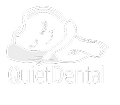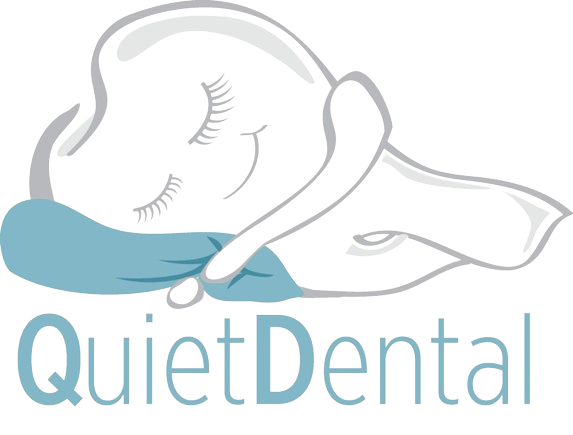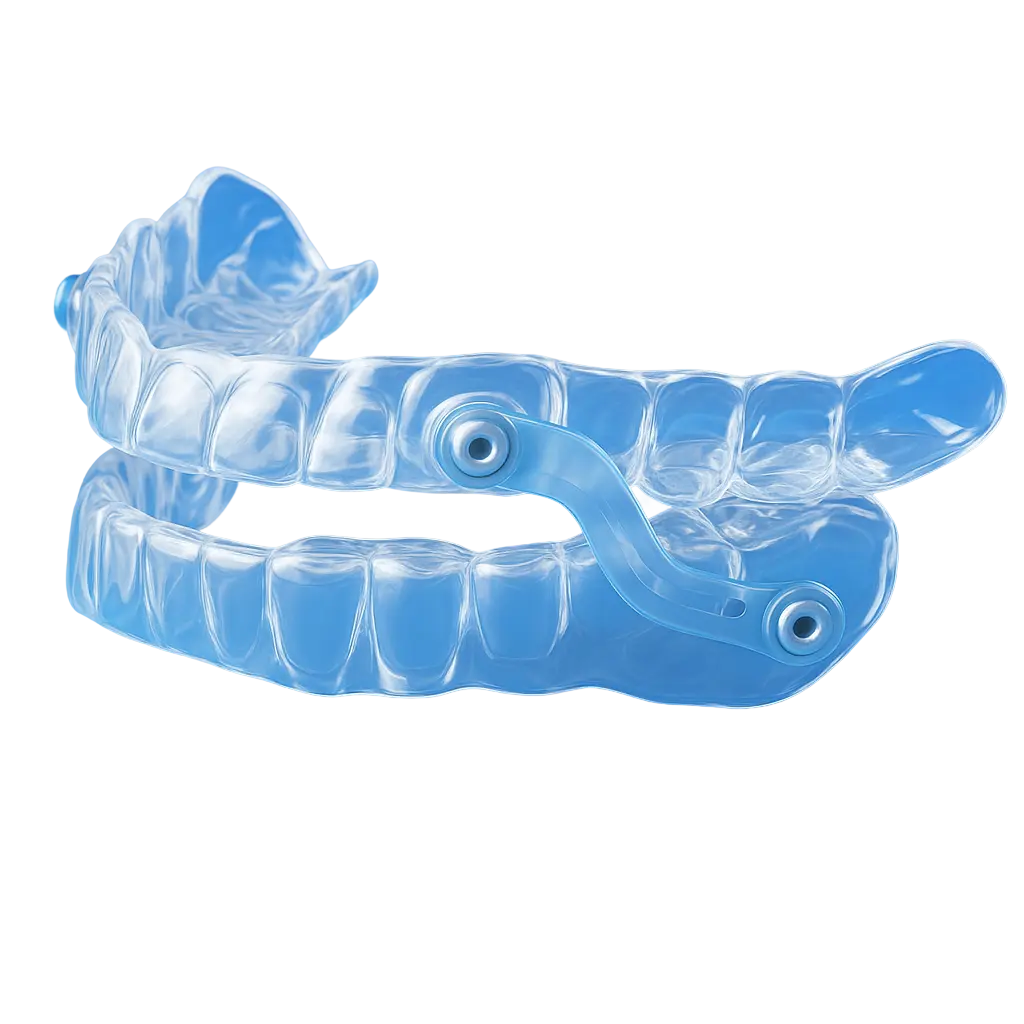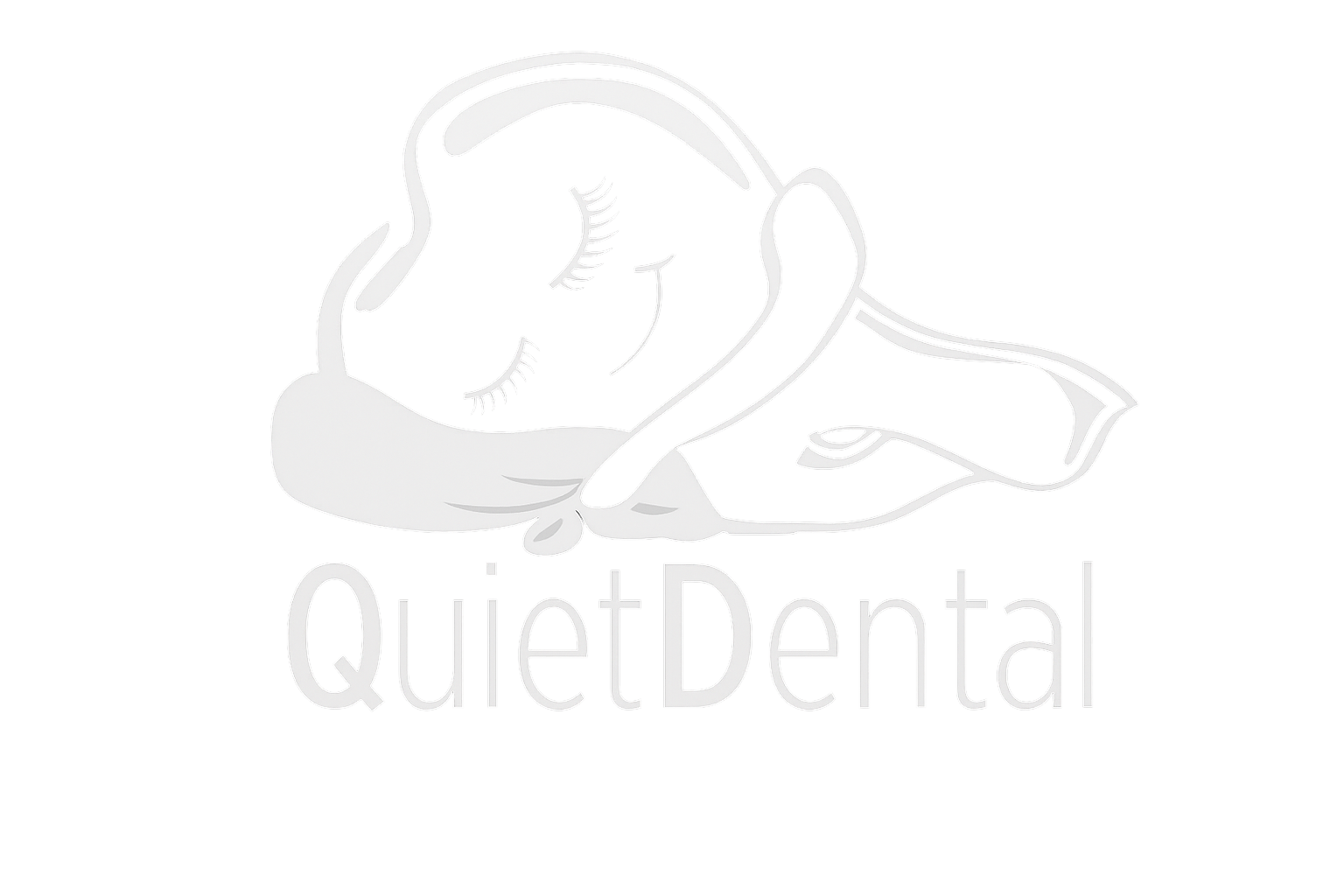8 min read
Tired of Mouthguards? 7 Proven Alternatives for Sleep Apnea That Actually Work (Brooklyn Dentist Explains)
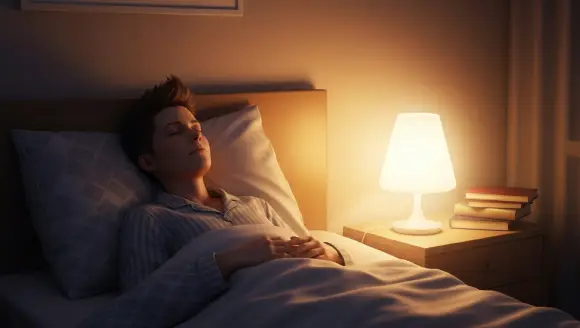
Key Highlights
- A lot of people feel that oral appliances and CPAP machines are not easy to use. This has made many look for other ways to treat sleep apnea.
- Making lifestyle changes such as losing weight and trying new sleep habits can help with sleep apnea symptoms in a big way.
- Positional therapy helps you sleep on your side. This can stop your airway from getting blocked and help you have restful sleep.
- Myofunctional therapy works by doing simple exercises to make your throat muscles stronger. This is a non-invasive way to treat sleep apnea.
- Surgical options and new treatments like Inspire therapy can be a long-term fix for those with moderate to severe sleep apnea.
- When you talk about alternative treatments with a Brooklyn sleep dentist, you can find a plan that fits you for better health.
Introduction
If you have obstructive sleep apnea, you may know about oral appliances or CPAP machines. A lot of people use these for obstructive sleep, but they do not work for everyone in the Brooklyn area. Wearing a heavy mask or an awkward mouthguard at night can feel bad, but you do not have to lose hope for some good sleep quality. There are other ways to help you breathe well and feel better in the morning. At Dental Arts of Brooklyn, we guide you and help you look into every choice to make your sleep quality better.
Why Many Brooklyn Patients Are Looking Beyond Mouthguards and CPAP
Many people in Brooklyn start with oral appliance therapy or cpap therapy for sleep apnea. But sometimes, they feel like they just can’t keep using these treatments. A cpap machine or mouthguard can feel uncomfortable. It can feel even worse than the sleep apnea symptoms they want to fix.
This makes many people look for a treatment option that fits into their life. They want something that works well and does not bring new problems. The aim is to use an option that helps you feel better, is easy to use, and can be used for a long time. This way, you can get the good sleep you need. Let’s look at why these common treatments may not always work for everyone.
Common Struggles with Oral Appliances for Sleep Apnea
Oral appliances are also known as mandibular advancement devices. They help by moving your lower jaw forward. This keeps your airway open when you sleep. These devices can help many people. But they may not feel good for everyone. Some people have jaw pain, muscle aches, or feel like their bite is different after using them.
These side effects can make it hard to use the device every night. You may find that you have too much saliva in your mouth or feel a dry mouth that keeps happening. These things can bother you and may make it tough to sleep well. For some people, the pressure on their teeth and jaw is too strong and they feel like they cannot put up with it.
Because you need to use treatment for sleep apnea every night, these problems can make people want to find something else. If you feel like oral appliances are more trouble than help, you are not on your own. There are many other ways to get better sleep.
CPAP Intolerance: Understanding the Need for Alternatives
Continuous positive airway pressure (CPAP) therapy is seen as the main way to treat sleep apnea. But it has its own problems for people who use it. A lot of users feel the CPAP mask is tight and not easy to wear. It can feel a bit too close to the face. Many people get skin problems or feel pressure marks on their face when using the mask.
The CPAP machine pushes air into your nose and throat all night. This can make your nose and throat feel dry. At other times, it may even block your nose. Some people feel bloated because they take in too much air while they sleep. The sound of the cpap machine can be a problem as well. It may bother you and anyone sleeping near you, which can make things feel worse.
Up to 40% of people given a CPAP machine will not use it all the time. This happens because of the problems they face with it. A lot of people stop using the cpap machine. This shows there is an urgent need for good options that people feel good about and really want to use every day.
Benefits of Exploring Alternative Sleep Apnea Treatments
Exploring options beyond standard treatments for sleep apnea can help you manage sleep apnea symptoms better. It’s important to choose a treatment option that matches your lifestyle and feels good for you. When you get a treatment that fits you well, you will use it often. This helps you feel better in the long run.
Looking at other choices can help you find a care plan that fits you better. You do not have to settle for the same treatment as everyone else. You can talk with your Brooklyn sleep dentist and work together to find therapy that matches what is causing your problem and how serious it is. This way, you get a plan that is made just for your needs.
The benefits often include:
- Greater Comfort: Many options for sleep apnea do not need you to wear a mask or a mouthguard.
- Improved Adherence: If sleep apnea treatment is simple and easy, you will likely use it all the time.
- Enhanced Overall Health: Treating sleep apnea well helps you get restful sleep. This leads to good overall health.
- Targeted Solutions: Some choices fix the main body cause of sleep apnea.
Lifestyle Changes for Managing Sleep Apnea Without Devices
Sometimes, the best ways to help with obstructive sleep apnea are not things you buy. Simple lifestyle changes can make a big difference. These changes to what you do each day can help your breathing at night. For many people who have sleep apnea, this means you may feel better and have less trouble sleeping without using any device.
For many sleep apnea patients, the changes you make are key parts of a full plan to help with this condition. You can use them by themselves for mild cases. These changes can also help make other treatments work better. Now, let’s see the practical steps you can take today.
Weight Loss and Sleep Apnea Improvement in Brooklyn Residents
For many people who live in Brooklyn, having extra weight is a big risk factor for sleep apnea. Fat building up around the throat and neck can make the airway smaller. This lets the airway close more during sleep. A little bit of weight loss can help a lot with obstructive sleep apnea.
Losing just 10% of your body weight can make a big difference if you have sleep apnea. You may see a drop in how many times your breathing stops and starts at night. For some people with mild sleep apnea, weight loss by itself may be enough to fix the problem. You might not have to use an oral device or a CPAP machine if you lose enough weight.
Losing weight does more than help with sleep apnea. It is good for your overall health in many ways. It helps lower blood pressure and gives you more energy. This is an important step that works well with any other treatment you use.
Healthy Sleep Habits for Reducing Apnea Symptoms
How you get ready for bed can help you sleep better, like using the right kind of device. Making good bedtime habits is called sleep hygiene. This can help your body work on a regular sleeping schedule and may help lower sleep apnea symptoms. Good sleep quality often starts with what you do before you get into bed.
These habits help you get deep sleep that lets your body rest and feel good. Making simple changes to what you do before bed can help calm the nervous system. It will also help you breathe more smoothly at night. The main idea is to give yourself the same relaxing routine at the end of each day.
Consider incorporating these practices:
- Go to bed and wake up at the same time every day, even on weekends.
- Make sure the bedroom is dark, quiet, and cool.
- Try not to have big meals or drinks with caffeine near bedtime.
- Do things that help you relax before going to sleep, like read a book or take a warm bath.
Avoiding Alcohol, Smoking, and Sedatives to Support Airway Health
Some things can make airway obstruction worse. You should not use these, especially right before going to bed. For example, drinking alcohol or taking sedatives can cause trouble. This includes some medicines your doctor gives you as a prescription or sleep aids you buy at the store. All of these relax the muscles in your throat and can make airway obstruction worse.
This type of relaxation in the upper airway can cause it to close up easier. When this happens, it can make sleep apnea happen more often and feel worse. If you have sleep apnea, it is good to not drink alcohol before you go to bed. It is also smart to talk with your doctor about any medicine you take to help you relax or sleep. The doctor may know another way or a better medicine for you.
Smoking is a big reason why some people have breathing problems at night. It can cause swelling and hold more fluid in the upper airway. This makes it harder for air to get in and out. When you stop smoking, your breathing can get better. It will also help your overall health. If you want to manage sleep apnea, quitting smoking is one of the best things you can do.
Positional Therapy: Harnessing Sleeping Posture to Ease Sleep Apnea
Did you know that changing the way you sleep could help with sleep apnea? A lot of people feel worse when they sleep on their back. Positional therapy is a way to help you stay on your side while you sleep. This can be a good method if you want to manage sleep apnea. A simple change in your sleep position can make a big difference.
This small change can help keep your upper airway open in a natural way. It stops the tongue and soft parts from falling back. If you have sleep apnea that depends on how you sleep, this can work really well. The solution is not invasive, and it is simple for people to try.
Positional Therapy: Harnessing Sleeping Posture to Ease Sleep Apnea
When you lie on your back, gravity makes some parts in you fall back. Your tongue and soft palate might move backward and block or make your upper airway smaller. This is one reason many people get breathing stops and snoring. This is often seen in obstructive sleep apnea and other obstructive sleep problems.
When you turn on your side, you change the way things work as you sleep. Side-sleeping lets gravity pull the tongue and other parts forward. This keeps them away from the back of your throat. A small change in your sleep position can help keep your airway open. This lowers the chances of airway obstruction.
For people who have sleep apnea symptoms mostly when they sleep on their back, positional therapy can help a lot. It lowers how many times the person stops breathing at night. The method is natural and works well to keep breathing clear during sleep.
Brooklyn Providers Using Specialized Positional Devices
Sleeping on your side all night can be hard. Most people move around when they sleep. That is why there are special tools to help with this. In Brooklyn, sleep experts can show you different devices. These are made to stop you from rolling onto your back. They help you avoid the supine position.
These positional devices come in different types. There are easy-to-use choices, like special pillows or bumpers you wear. There is also more advanced wearable tech. Some of these be worn on your chest or around your waist. They can feel when you are turning onto your back and make a gentle vibration. This helps train you to stay on your side during sleep without waking you up.
This way of using positional therapy can work well for many people who have sleep apnea. It is a good choice for those with mild or moderate positional sleep apnea. It is best for people who do not want to use masks or mouthguards. A talk with your doctor can help you know if this kind of device would work for you.
Choosing the Best Positional Therapy for Your Needs
There are several types of positional therapy devices out there. Picking the right one depends on your unique needs and what you feel most comfortable with. What helps one person stay in the right sleep position might not be right for someone else. You need to find the one that keeps you in place during the night but does not bother your comfort.
There are several types of positional therapy devices out there. Picking the right one depends on your unique needs and what you feel most comfortable with. What helps one person stay in the right sleep position might not be right for someone else. You need to find the one that keeps you in place during the night but does not bother your comfort.
Here’s a fast and easy way to see the options and help you get what they are.
Device Type
How It Works
Best For
Wedge Pillows/Bumpers
Physically prevent you from rolling onto your back.
People who don’t mind having extra pillows in bed.
Wearable Vibrating Devices
Worn on the chest or neck; vibrate when you lie on your back.
Tech-savvy users who want to train their body’s sleeping habits.
DIY Methods (e.g., “Tennis Ball T-shirt”)
A tennis ball sewn to the back of a shirt makes back-sleeping uncomfortable.
Those looking for a low-cost, simple starting point.
Surgical Alternatives to Oral Appliances for Sleep Apnea and Snoring
When treatments that do not use surgery are not giving enough help, you may need to look at surgical options. These surgical procedures are made to fix the physical problems that block your airway while you sleep. They work to stop the airway from closing and help you get better rest.
Upper airway surgery is used for people with sleep apnea or snoring when CPAP or oral appliances have not worked. Some people also need it if they have a clear problem with their nose or throat. This type of surgery is a more direct treatment for these issues in the upper airway. Now, let’s see when upper airway surgery or these other options might be best to use.
When Is Nasal or Throat Surgery Appropriate?
Surgery is not the first thing doctors suggest when treating sleep apnea. For most people, the best treatment option starts with things like CPAP or oral appliances. These are tried first to see if they work. The idea is to use surgery only if those do not help. A doctor will look at several important things before choosing surgery for sleep apnea.
First, you need to have a clear physical problem that is causing airway obstruction. This might be large tonsils, a bent septum, or too much tissue in the soft palate. Surgery works best when there is one main issue the doctor can fix. It is often thought about for people who have moderate or severe OSA.
You need to be in good overall health to have the surgery and to recover afterwards. Your doctor will talk to you about both the good and bad things that could happen. This way, you can know what is involved with this and decide if you want to go ahead.
Nasal Surgery Options for Brooklyn Sleep Apnea Patients
For some Brooklyn sleep apnea patients, the main issue comes from the nose. A bent septum, big turbinates, or nasal polyps can block the nose and make it hard to breathe. You may have to breathe through your mouth instead. This can raise the chance of your airway closing.
Nasal surgery is done to fix these inside problems and open up the nose. A doctor can do procedures like septoplasty to make the septum straight, or turbinectomy to make the turbinates smaller. These can help people breathe much better.
For some people, better breathing through the nose can make sleep apnea less bad on its own. For others, it can help you feel more comfortable with CPAP or nose devices. This can also help these treatments work better. It is one thing you should think about when looking at CPAP alternatives, especially if you feel stuffed up often.
Exploring UPPP, Inspire, and Other Advanced Surgical Procedures
Besides nasal surgery, there are also some advanced surgical procedures to help with blockages in the throat. These surgical procedures for OSA treatment are mainly used when a person has moderate to severe OSA and other therapies did not work. The main goal of these options is to either take out or move some tissue. This step can help make the airway more open and steady, so it is easier to breathe.
One of the most common ways doctors treat this is with Uvulopalatopharyngoplasty (UPPP). In this, they take out some extra tissue from the soft part at the roof of your mouth and the uvula. There be other ways too, like making the roof of the mouth stiffer, or moving the jaw to open up the airway more.
Here are some of the new surgical procedures you can get:
- Uvulopalatopharyngoplasty (UPPP): This helps remove or change tissue in the throat. It can make the upper airway bigger and help air move better.
- Maxillomandibular Advancement (MMA): This is a more involved type of surgery. The doctor moves the upper and lower jaws forward to open up the airway.
- Inspire Therapy: This gives upper airway stimulation with an implant device. It helps keep the airway open while you sleep.
- Palatal Implants: These are tiny implants that go into the soft part of the roof of your mouth. They help make it stiffer, so there is less vibration and it doesn’t collapse as much.
Myofunctional Therapy: Exercises for Tongue and Throat Muscles
Think of this like physical therapy, but for the mouth, tongue, and throat. Myofunctional therapy uses exercises to make the throat muscles stronger. The program does not use surgery or needles. Weak throat muscles can cause problems with the airway when you sleep.
When you work on making these muscles stronger, you help them stay active. This can help keep your airway open at night and may let you breathe better when you sleep. This way is one of the safest home remedies. It can also help your overall health and improve how you breathe every day.
How Myofunctional Therapy Improves Sleep Apnea Without Devices
Myofunctional therapy helps with airway obstruction in the upper airway. It does this by focusing on what causes muscles to block the airway. The exercises work on the strength, the way your tongue and other muscle sit, and how they move. This includes the tongue, soft palate, and muscles in your upper airway. When these muscles get stronger, they do not relax or collapse as much when you sleep.
This therapy helps fix the wrong ways you breathe. It teaches you to breathe through your nose, not your mouth. Breathing through your nose is better and helps you feel more stable. The therapy also makes your muscles stronger and helps them sit in the right place when you are not using them. Myofunctional therapy can lower how bad sleep apnea and snoring get by fixing your breathing patterns.
For some people, this can be the only treatment they need for mild sleep apnea. For others, it works well with oral appliance therapy or CPAP. It may help to use a lower pressure setting or make the device feel less bothersome.
Simple At-Home Exercises Recommended by Brooklyn Dentists
The good thing about myofunctional therapy is that you can do a lot of tongue and throat exercises at home. If you practice these simple routines often, they can help lower sleep apnea symptoms over time. These are good home remedies that let you take control of your own treatment.
A trained therapist or a Brooklyn dentist who knows their work can help you with the right technique and how often to practice it. Many of these main exercises are simple to do. It is more important to keep doing them regularly than to do them too hard.
Here are some examples of exercises you may learn:
- Tongue Press: Put the tip of your tongue up against the top of your mouth. Keep it there for a few seconds.
- Tongue Slide: Place the tip of your tongue right behind your top front teeth. Slide it back across the top of your mouth.
- Cheek Hook: Take your finger and hook it inside your cheek. Pull your cheek out. Then use your cheek muscles to bring it back in.
- Jaw Stretch: Open your mouth as wide as you can without pain. Hold it open for 5–10 seconds.
Finding a Qualified Myofunctional Therapist in NYC
Even though the exercises look easy, it is good to work with a qualified myofunctional therapist. A trained expert will make a plan for you that fits your needs and help you get the best results. They know how to guide you with the right exercises and make sure you do them correctly and well.
In the greater NYC area, you can find therapists who focus on this treatment option. A sleep dentist is a good person to ask for help if you need a referral. The sleep dentist will help you find a therapist who knows how to use these techniques for sleep apnea patients.
At Dental Arts of Brooklyn, we are here to help you get care that works for you. Our team talks with other dental professionals in the city to make sure you get good treatment. We can show you how to start your myofunctional therapy and send you to a specialist you can trust.
Inspire Therapy: Advanced Nerve Stimulation as a Non-Oral Appliance Solution
If you want something new that doesn’t use a mask or a mouthguard, Inspire therapy could be a good choice. This way uses hypoglossal nerve stimulation. It is approved by the FDA. Inspire therapy works inside your body to help keep your airway open when you sleep. This can help you breathe easier at night. The treatment uses your hypoglossal nerve as part of its plan to do its job.
Inspire is one of the most advanced CPAP alternatives. It uses upper airway stimulation to help the muscles that move your tongue. This is an implantable device that works inside your body. Because of this, you do not have to wear anything on the outside at night.
How Inspire Therapy Works for Sleep Apnea Treatment
Inspire therapy uses a small device that is put into your body to check how you breathe when you sleep. The device has a small generator under the skin in your upper chest. There is also a sensor to track your breathing patterns, and a part that goes to the hypoglossal nerve, which helps move your tongue.
When the device knows you are going to take a breath, it gives a soft electrical stimulation to the nerve. This gentle pulse makes your tongue move forward a little. It keeps your airway open. You can breathe easily and without anything getting in the way.
You use a small remote to turn the device on before you go to bed. You turn it off when you wake up. The way it works is gentle and matches your normal breathing. You will not feel it while you sleep.
Comparing Inspire Therapy to Oral Devices and CPAP
When you think about Inspire therapy, it helps to see how it compares to easy options, like oral appliances and CPAP devices. Inspire is not like these outside devices. It works inside your body. This gives you some different, good things and things you need to think about.
The main benefit is that you feel free. You do not need to wear a mask, connect a hose, or adjust a mouthpiece. You just turn it on and go to sleep. This treatment option is good for people who travel or for those who do not like using things on the outside of their body.
Here’s how Inspire compares:
- Invasiveness: Inspire needs a doctor to put it in with surgery, while CPAP and oral appliances do not need surgery. They are non-invasive, so you do not have to have an operation.
- Nightly Use: You will not have any outside equipment when you use Inspire. You only have to click a remote to turn it on. For CPAP, you have to wear a mask and use a machine every night. With oral appliances, you must put them in your mouth while you sleep.
- Comfort: Inspire helps you avoid problems like mask leaks, hurting your skin, or jaw pain that you can get with CPAP or oral appliances.
- Effectiveness: Research shows that Inspire works very well for people who have moderate to severe OSA, if they are the right type of patient.
Am I a Good Candidate for Inspire? Brooklyn Evaluation Process
Inspire therapy can be a good treatment option for sleep apnea. But, it is not the right choice for everyone who has obstructive sleep apnea. To get Inspire therapy, people usually need to have moderate to severe obstructive sleep apnea. They should also have tried CPAP therapy before and found that it did not work. There are some other things doctors will look at. These include your body mass index (BMI) and the shape of your airway.
The Brooklyn evaluation process helps to see if you are the right fit. A sleep specialist does a full checkup. The specialist will look at your sleep study results. A physical checkup of your airway is also done. This checkup may need a special test called drug-induced sleep endoscopy (DISE).
This exam lets doctors find how your airway closes when you sleep. This helps them check if Inspire therapy is right for you. The first step for this new treatment is to have a meeting. This will show if you meet the basic rules they look for.
Conclusion
If you have sleep apnea and find it hard to use regular mouthguards or CPAP machines, there are other ways to help you. You can try lifestyle changes that help you the get better sleep. There are also new treatments like Inspire Therapy and myofunctional therapy. People in Brooklyn have many choices to make for restful sleep. The main thing is to find a way that works the best for you and that meets your needs most. If you want to improve your sleep now, reach out to Dental Arts of Brooklyn for a talk. Their team can help you find sleep apnea treatments and non-oral appliance solutions made for you.
Frequently Asked Questions
From how the AMA works to what to expect during the process, here are the most common questions we hear, answered simply and clearly.
Yes, natural home remedies can help a lot with sleep apnea symptoms. Simple lifestyle changes like weight loss and regular exercise are really good. Avoid drinking alcohol before bed too. These steps make a big difference.
You can also try myofunctional therapy exercises. These help to make your throat muscles stronger. A small change in your sleep position can also help you feel better and sleep better. All these tips can improve sleep quality without using oral appliances.
You can also try myofunctional therapy exercises. These help to make your throat muscles stronger. A small change in your sleep position can also help you feel better and sleep better. All these tips can improve sleep quality without using oral appliances.
In Brooklyn, you can find many CPAP alternatives. The best choice will depend on what you need and how serious your symptoms are. Some people get help from oral appliances that are made just for them. Others try positional therapy, which helps by getting you to sleep in a better position. There are also programs that focus on lifestyle changes. Myofunctional therapy is another way some people try to treat their problems.
If your symptoms are more serious, there are advanced alternative treatments you can try. Inspire therapy is one good option, along with some types of surgical procedures. A doctor will look at your symptoms carefully to help you decide which of these alternative treatments might work best for you.
If your symptoms are more serious, there are advanced alternative treatments you can try. Inspire therapy is one good option, along with some types of surgical procedures. A doctor will look at your symptoms carefully to help you decide which of these alternative treatments might work best for you.
The best treatment option is different for each person. The team at Dental Arts of Brooklyn can help you make the right choice with a meeting. We look at your unique needs, how serious your condition is, and your overall health. With this information, we help you get better sleep quality by giving you a plan made for you.
